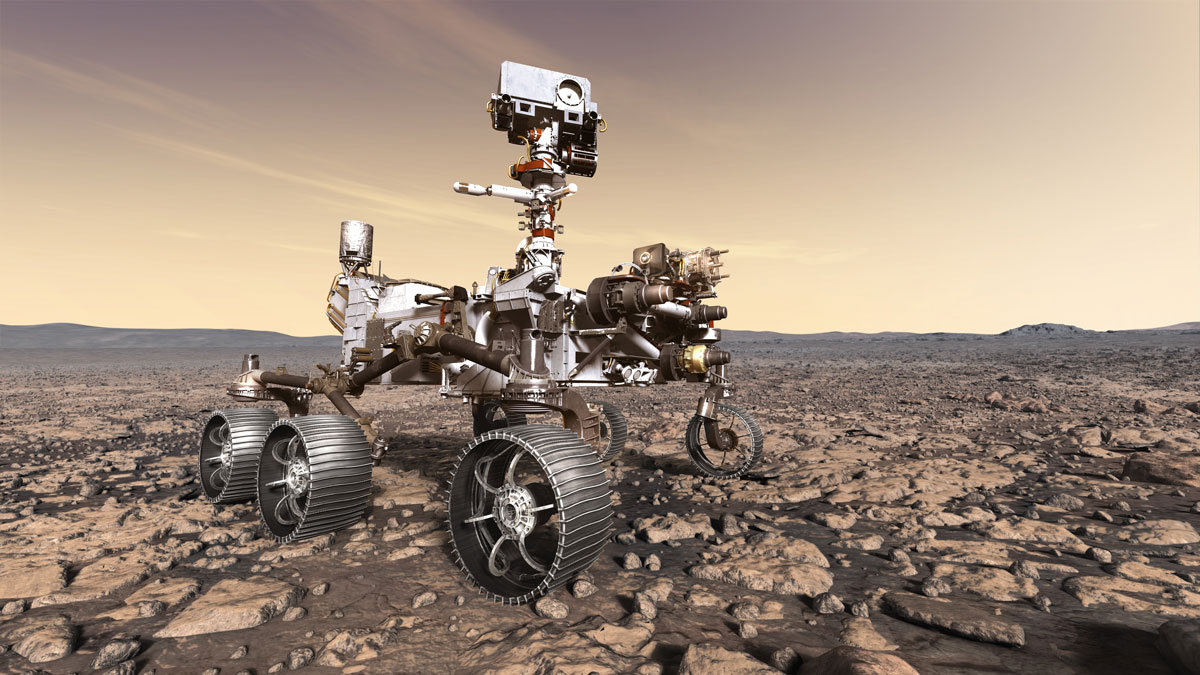Perseverance rover on Mars
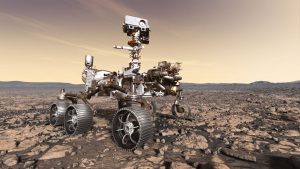
The Perseverance rover. Credit: NASA / JPL
July 2020 saw the launch of the latest NASA probe tom Mars.
On February 18, 2021, the Perseverance rover landed on the red planet.
The mission objectives included searching for signs of ancient alien life.
It would also collect rock samples for return to Earth by a future robotic mission.

Perseverance landing on Mars, artist impression. Credit: NASA
The size of a car and weighing a ton, Perseverance is the heaviest rover so far landed on Mars.
Among its instruments are MastCam-Z, which can take panoramic and zoomed images.
Its Supercam can provide remote chemical and mineral analysis as well as images..
Nicknamed ‘Percy’, Perseverance also carried a mini-helicopter named Ingenuity.
Landing site
The rover landed in the Jezero Crater.
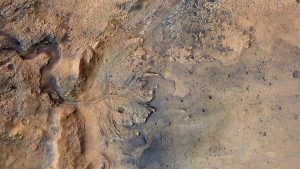
Jezero crater. Photo: NASA
Long ago the Jezero crater was filled with water.
Perseverance landed in the delta of a river that flowed into the crater.
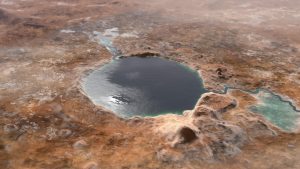
Jezero crater past. Credit: NASA
The landing site was named Octavia E. Butler after the African American science fiction writer who died in 2006.

Octavia E Butler Landing, first Mastcam panorama. Photo: NASA / JPL
Why Perseverance?
Perseverance is the sixth rover landed on Mars by NASA.
Others like Sojourner, Spirit and Opportunity are no longer operational.
Curiosity is still active. The Perseverance design was based on this rover.
NASA ran a competition for school students to name the new rover.
28,000 students entered names.
It was won by seventh-grader Alexander Mather of Burke, Virginia, with ‘Perseverance’.
‘Alex’s entry captured the spirit of exploration’ said a NASA spokesperson.
And speaking of names, I’m now on Mars!
My name and nearly 11 million others are on 3 silicon chips on an aluminium plate on the rover.
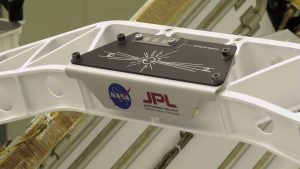
Plate with name chips. Photo: NASA / JPL
Percy’s travels
The rover uses Autonav software to find its way round rocks and obstacles.
In less than a year, Perseverance has travelled further than any other rover.
On February 14th it travelled 320 metres, the furthest distance in a single day.
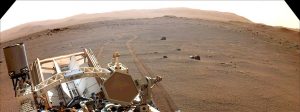
Perseverance rover tracks on Martian surface. Photo: NASA / JPL
During its stops, the rover has taken the first rock core samples from another planet.
You can follow Percy’s travels on the interactive map at
Location Map for Perseverance Rover – NASA Mars
Ingenuity
The mini-helicopter Ingenuity stands half a metre high with rotors 1.2 metres wide.
It weighs 1.8kg on Earth but only 0.7kg on Mars, whose gravity is less.
Nicknamed ‘Ginny’, it runs on a solar charged lithium ion battery.
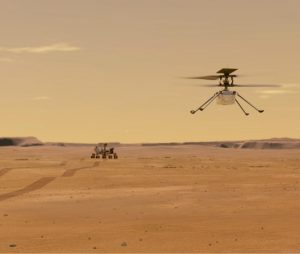
Ingenuity and rover. Credit: NASA / JPL
JPL flew Ginny for the first time on April 19th, 2021.
So far it has flown 26 times. The longest flight saw it cover 709 metres.
It recently took images of spacecraft debris at the landing site.

Landing site from Ingenuity. Photo: NASA / JPL
Ingenuity carries a piece of fabric from the Wright brothers airplane that flew in 1903.
Its take-off and landing area is called Wright Field.
Martian solar eclipse
On April, 20th, 2022, Perseverance saw the Moon Phobos pass in front of the Sun.
This is Mars’ version of a solar eclipse. not quite as spectacular as Earth’s counterpart.
Phobos is only 11km across and orbits just 6,000km above the Martian surface.
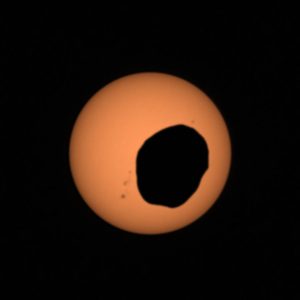
Phobos and Sun from Perseverance. NASA / JPL
Coming up for Perseverance
Perseverance is expected to continue its travels in the Jezero crater for at least another year.
It will complete one Martian year, 687 days on the surface of the red planet.
As well as taking images, it will sample rocks that might hold evidence of past life.

Santa Cruz hill from Perseverance. Photo: NASA / JPL
The rover will continue to cross the ancient river delta.
It will take around 40 rock samples to store for a future mission to collect.
After the traversing the delta, Perseverance will climb to the rim of Jezero crater.
One of its science missions is to test extracting oxygen from carbon dioxide in the Martian air.
Future astronauts may look back and thank Percy for paving their way to the red planet.
The author: Dennis Ashton is a Fellow of the Royal Astronomical Society and a Wonderdome presenter.
Would you like to hear more Astronomy news?
Do you want to to find out about our upcoming public events?
Follow WonderDome Portable Planetarium on Twitter and Facebook or go to our web site wonderdome.co.uk!

